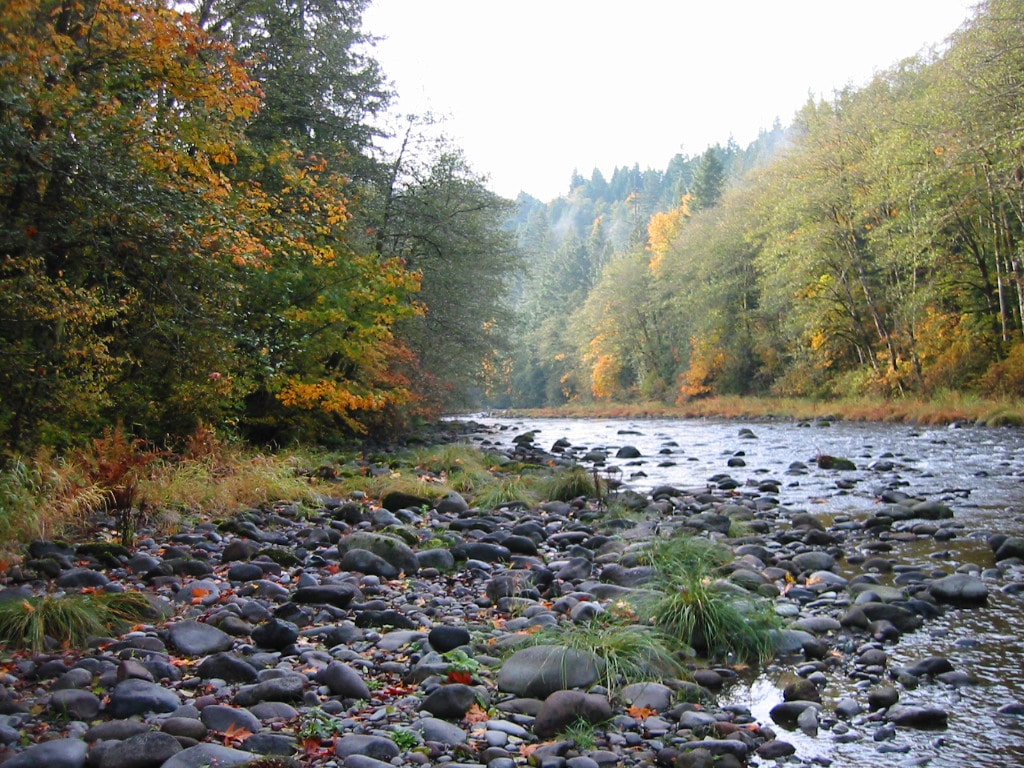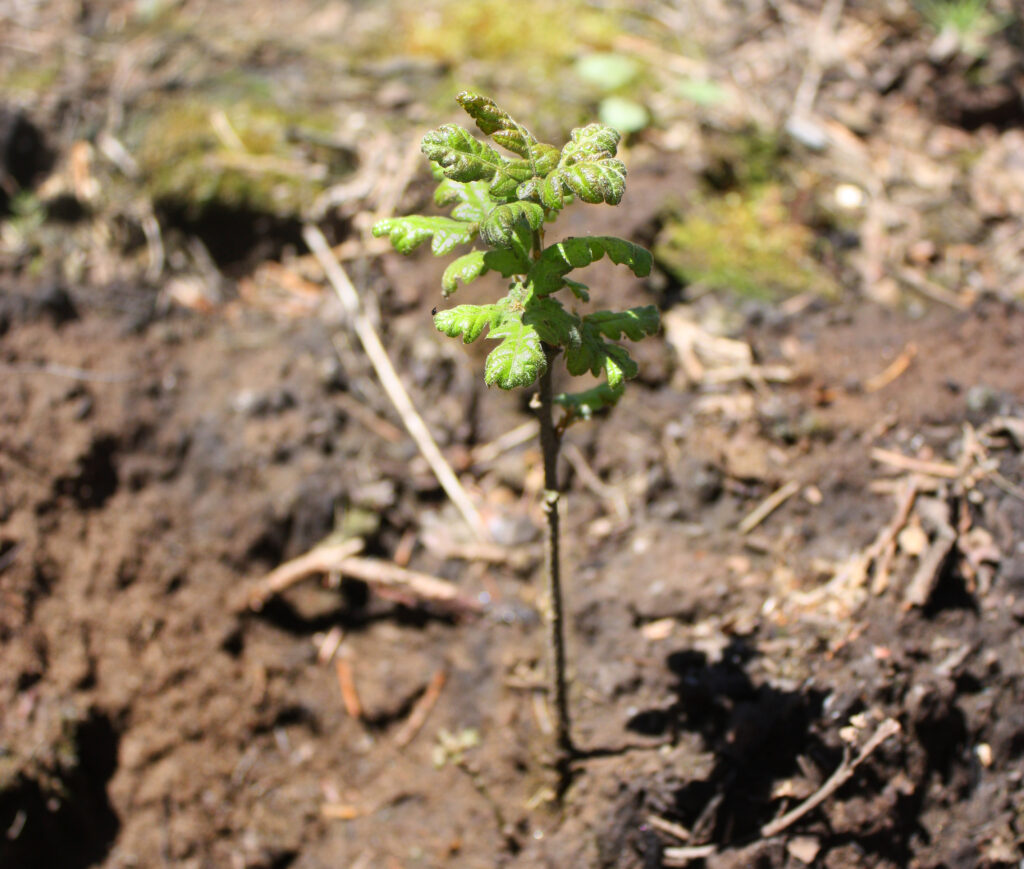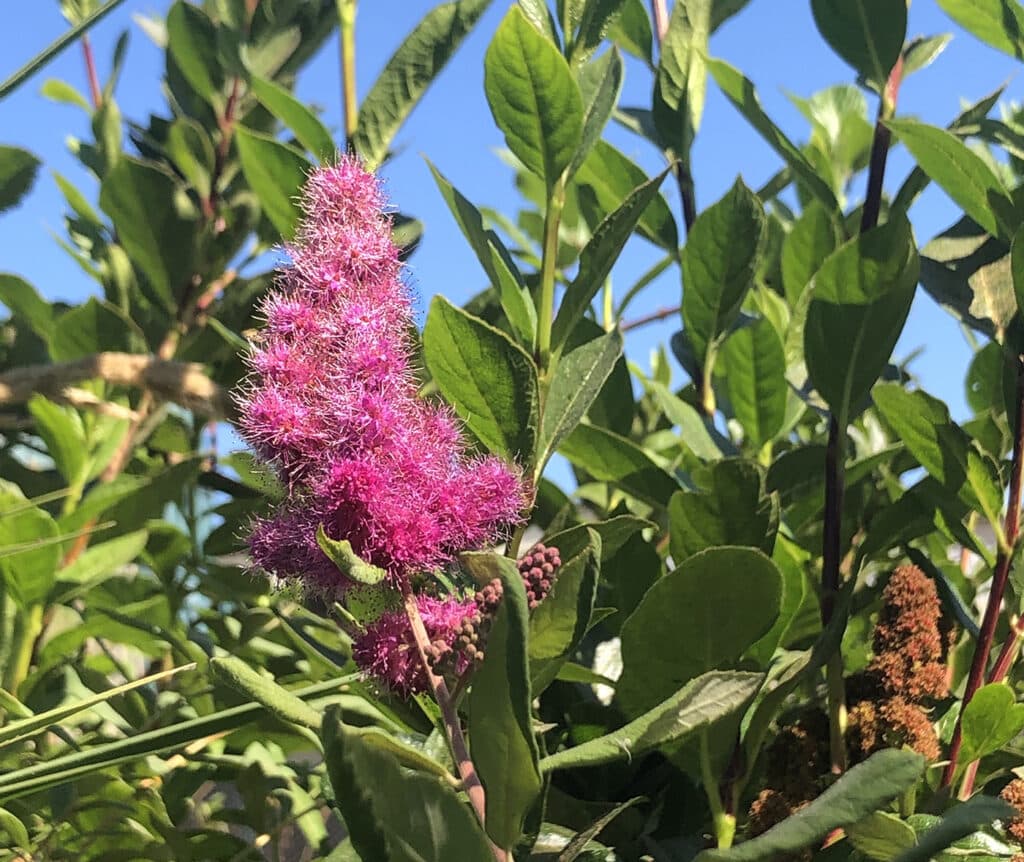Native Plants and Why They Matter
March 13, 2023
River temperature is a vital element of the overall health of river ecosystems. When The Freshwater Trust (TFT) plants native trees along stream and riverbanks throughout the western U.S., our goal is to create a vibrant, dense canopy of shade to block the sun from further heating the water. Most rivers would naturally have had a variety of trees and shrubs along their banks, uniquely suited to their habitat. Over time, many of these plants have been removed as humans used the areas for agricultural, logging, mining, and other purposes.
The good news is that we can fix a system that is out of balance and make it more resilient.

How do we know which trees to plant and where?
Knowledge of native plants’ ecological growing conditions is very important. Different species of native trees, shrubs, wildflowers and grasses are adapted to grow in specific eco-regions. Within eco-regions and within a particular project site, we carefully place native plants according to variations in sunlight, heat exposure, growth height, flood inundation, and spacing related to the same and other species.
When the right species are selected for the right place, they are more likely to survive changes in weather, get the water they need, and co-exist with other plants, animals, and insects in a balanced ecosystem. Native plants also suppress weeds that may otherwise spread out of control.
When we plant a tree, we want to be confident that it can last a long time in that spot.

How are native trees strong and resilient?
With air temperatures getting hotter and droughts lasting longer, native vegetation has a lot of stressors to handle. Fortunately, many native species have evolved to co-exist with fires, floods and variable weather, as these have been part of western environments for millennia. After fires or floods, their seeds emerge or resprout, grow, and help restock the changed environment with native plants once again.
“At project sites in southwestern Oregon’s Rogue Valley, we saw native trees and shrubs recover quickly after wildfires in 2020,” said Olivia Duren, TFT Restoration Program Manager. “Nearby areas that were dominated by non-native vegetation, such as Himalayan blackberry, have been much slower to recover.”
The immediate impact of the fire was less severe on the existing native vegetation, soils, and seed bank. Additionally, the long-term impact of the fire will be less severe because the plant communities, and therefore the wildlife and landscape overall, can bounce back more quickly.
Resilience is important in drought conditions as well.
“In water-limited areas in southern Idaho, native trees have roots that can dive deep into the soil to find water,” said Sarah Funk, Vegetation Ecologist with Idaho Power Company. “Their long-term water requirements are also likely lower than the non-native trees common in this area.”
Where do the native trees we plant come from?
In a healthy environment, native trees would naturally self-propagate, meaning their seeds would spread and new trees would grow nearby. In riparian areas (streambanks and riverbanks), seeds are easily carried around by flood waters.
“Native wildlife and insects also help disperse tree seeds and aid in flower pollination, perpetuating native tree survival,” said Funk.
Under current conditions, however, weeds smother native seedlings, and the next generation of trees fails to grow.
For river restoration projects such as ours, we source large quantities and a wide diversity of native trees and shrubs from specialized nurseries. We follow standards that ensure nurseries are growing plants sourced from nearby and that represent adequate genetic diversity. Lead times for obtaining native plant stock can be as long as two years, so careful planning and project management is required.

Native Douglas spirea is often used in TFT’s riparian restoration projects. It attracts hummingbirds, butterflies, bees, and other pollinators.
Besides shade, what other benefits do native trees provide?
In addition to shading rivers, native forests along streams and rivers promote cleaner water. The root structures and canopies of native plants filter water and retain soil, which protects the ecosystem from sediments and excess nutrients that rush into the water during erosion and high-rain events. When large trees die and fall, they are naturally incorporated into the rivers. Water flow around the downed trees encourages pool development, sinuous channels and the collection of gravels, all beneficial to salmon of multiple life stages and other aquatic organisms.
Native plants also support a great abundance of bees, butterflies, insects and wildlife. Some have closely co-evolved, such as the vulnerable acorn woodpecker and Oregon’s white oaks or the Willamette Valley’s endangered Fender’s blue butterfly and Kincaid’s lupine, its main food source.
“Native plants are extremely important to the wildlife that depend on them,” said Monique Leslie, TFT Senior Restoration Project Manager. “As fire severity and intensity increases, winters get colder and longer, and summers get hotter, just as native plants are under additional stress, so are bugs, birds and animals.”
“Intact native plant communities provide the most reliable sources of food and shelter for native wildlife, some of which are entirely reliant on native plants.”
Benefits of a healthy riparian forest:
- Improves water quality and water temperature
- Supports wildlife habitats in land and water
- Provides food for wildlife and insects
- Stabilizes soils and captures sediment and excess nutrients
- Produces oxygen and absorbs carbon
- Recovers faster from disturbances such as wildfires
- Slows flood waters and supports infiltration to groundwater
- Cools and humidifies the air around it
What does the future forest look like along the riverbanks?
Native plants thrive in the geographic ranges in which they have evolved over a long time. Rapid changes to temperature and precipitation on existing native plant communities are concerning. TFT’s upcoming projects in northern California are focused on recharging groundwater supplies that will directly benefit one of the biggest native oak riparian woodlands remaining in the state.
We can also take action to help native trees as their natural ranges begin to shift.
“We need to plant forests of the future that can withstand hotter and drier summers as well as adapt to local day length, winter temperatures, pathogens, and more,” said Duren. “Our strategy is to increase more drought- and heat-tolerant species such as white alder in planting mixes, and to promote genetic diversity in all the species that we plant.”
“We are planting trees that are not only adapted now so they can establish, but are also adaptable to the future so they can persist—hopefully for centuries.”
About The Freshwater Trust: TFT has planted and stewarded riparian forests for more than 15 years. Its knowledgeable staff includes botanists, ecologists, biologists, and natural resource management and restoration professionals. TFT has developed robust standards and protocols for riparian planting programs that have guided the organization in restoring more than 200 acres of riparian forest.
#ecology #native trees #resilience #riparian restoration
